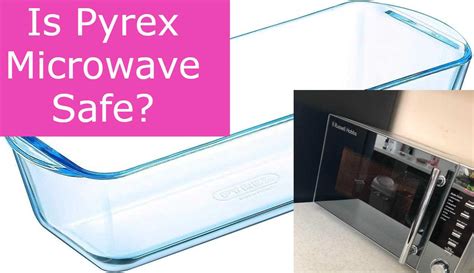Are you unsure about using Pyrex in the microwave? You’re not alone. Many people have questions about whether it’s safe and how to use it correctly. In this article, we will explore the ins and outs of using Pyrex in the microwave, including its benefits, safety guidelines, and a host of practical tips to help you make the most of this versatile cookware.

Benefits of Using Pyrex in the Microwave
Pyrex is a type of borosilicate glass that is known for its strength, durability, and heat resistance. It is a great choice for use in the microwave because it:
- Is heat-resistant: Pyrex can withstand temperatures up to 450°C (842°F), making it safe to use in the microwave for most cooking applications.
- Is non-porous: Pyrex does not absorb odors or flavors, so it will not impart any unwanted tastes or smells to your food.
- Is easy to clean: Pyrex is dishwasher-safe, making it a breeze to clean up after use.
- Is microwave-safe: Pyrex is specifically designed to be used in the microwave, so you can use it confidently without worrying about damage.
Safety Guidelines for Using Pyrex in the Microwave
While Pyrex is a safe material for microwave use, there are a few important safety guidelines to follow:
- Never use Pyrex with metal: Metal can cause arcing and sparking in the microwave, which can damage the oven and pose a fire hazard.
- Do not overheat Pyrex: Overheating can cause Pyrex to break or crack. Always follow the manufacturer’s instructions for heating times and temperatures.
- Avoid sudden temperature changes: Do not place hot Pyrex in cold water or vice versa. This can cause the glass to break.
- Check Pyrex for damage before each use: If you see any cracks, chips, or other damage, do not use the Pyrex in the microwave.
- Use Pyrex with a lid: This will help to prevent splatters and keep your microwave clean.
Tips for Using Pyrex in the Microwave
Here are a few tips to help you get the most out of using Pyrex in the microwave:
- Preheat Pyrex before adding food: This will help to prevent the glass from breaking.
- Do not overfill Pyrex: Leave at least 1 inch of space at the top of the container to allow for expansion.
- Stir food frequently: This will help to ensure that the food cooks evenly.
- Use a lower power setting: This will help to prevent overcooking and splattering.
- Let Pyrex cool down before handling: Pyrex will retain heat for a period of time after being removed from the microwave. Use caution when handling it.
Troubleshooting Pyrex Microwave Problems
If you encounter any problems when using Pyrex in the microwave, here are a few troubleshooting tips:
- Pyrex is breaking: This could be due to overheating, sudden temperature changes, or damage to the glass. Inspect the Pyrex carefully for damage and follow the safety guidelines listed above.
- Pyrex is sparking: This could be due to metal in the container or on the food. Remove any metal and try again.
- Food is not cooking evenly: This could be due to uneven stirring or overfilling the container. Stir the food more frequently and leave more space at the top of the container.
- Pyrex is getting too hot: This could be due to using too high a power setting or overcooking the food. Reduce the power setting and cook the food for a shorter period of time.
Conclusion
Pyrex is a versatile and safe material for use in the microwave. By following the safety guidelines and tips outlined in this article, you can enjoy the benefits of Pyrex while minimizing the risks. With its strength, durability, and heat resistance, Pyrex is a great choice for a wide variety of microwave cooking applications.
